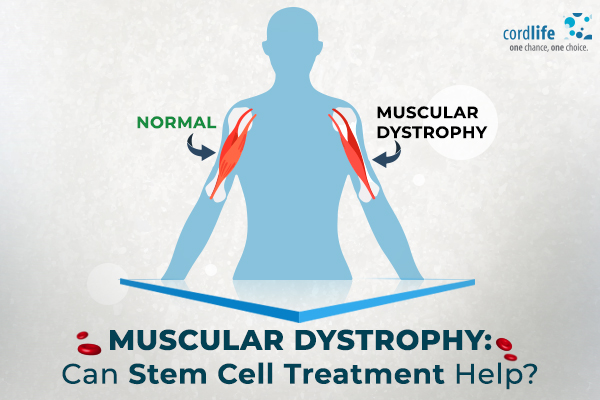Table of Contents
Muscular Dystrophy (MD) is a genetic condition that causes the muscles in your body to weaken and degenerate over time. There are several types of Muscular Dystrophies that can occur, like Becker’s Muscular Dystrophy, Limb-Girdle Muscular Dystrophy, etc. Of these, Duchenne Muscular Dystrophy (DMD) is known to be the most fatal one. However, researchers are exploring novel techniques like stem cell treatment to alter the genetic mutations causing the illness and improve the patient’s quality of life.
What Happens in Duchenne Muscular Dystrophy (DMD)?
This condition occurs when there are mutations in the dystrophin gene that code specific muscle proteins. Dystrophin is responsible for the proper functioning of the muscles, and the lack of it can cause the muscle fibres to be in disarray and degenerate. As a result of improper functioning of the muscles, there is progressive and rapid muscle weakness and loss.
The Dystrophin gene found in the X-chromosome affects men, while most women only remain dormant carriers of the gene. Hence, the condition is typically passed on from either parent to the child. However, in some cases, this is due to a new, spontaneous genetic mutation that occurs during pregnancy.
What Are The Signs of DMD?
The muscle weakness caused by this condition starts manifesting during early childhood days. Delay in achieving developmental milestones like sitting, walking, and even talking are signs that the child could be suffering from DMD. The condition usually starts with a loss of strength and function in the pelvis and thigh region, followed by the arms. The child has trouble standing up as a toddler and loses mobility by the time they are teenagers. Increased convex curvature of the spine and change in gait are also noticeable signs of DMD. Even the heart and lung functions are affected due to the weakening of the muscles in the region, causing breathing and other issues for the child as they grow older. This leads to a respiratory or cardiac failure by the time the patient reaches their twenties.
Future of DMD Treatment With Stem Cells
Although there is no cure for DMD at present, the advancement in medicines, gene therapy, stem cell treatments, etc., are providing greater hope for patients to live longer and feel better.
Ongoing research indicates that mesenchymal stem cells (MSC) can help relieve the DMD symptoms by aiding muscle cell regeneration and repairing damaged muscle cells. Since umbilical cord stem cells are at an early development stage, they can take the form of any cell. Therefore, using Umbilical Cord Mesenchymal Stem Cells (UCMSCs) increases the muscle cells’ functionality and replenishes the stem pool.
In a study conducted on mice by a team of Harvard Stem Cell Institute researchers, the outcome looks promising. The researchers transplanted healthy stem cells into the muscles of mice with muscular dystrophy and observed that these new cells improved the damaged muscles’ functions and made them contract. They also noticed that the healthy stem cells replenished the diseased stem cell pool, which could repair any damage to the muscles during future injuries.
This study further demonstrates the potential of stem cell therapy in treating patients with muscular degeneration caused by DMD or other types of muscular dystrophy. The banking of stem cells can prove to be a blessing for your family as well as the field of medical science.
